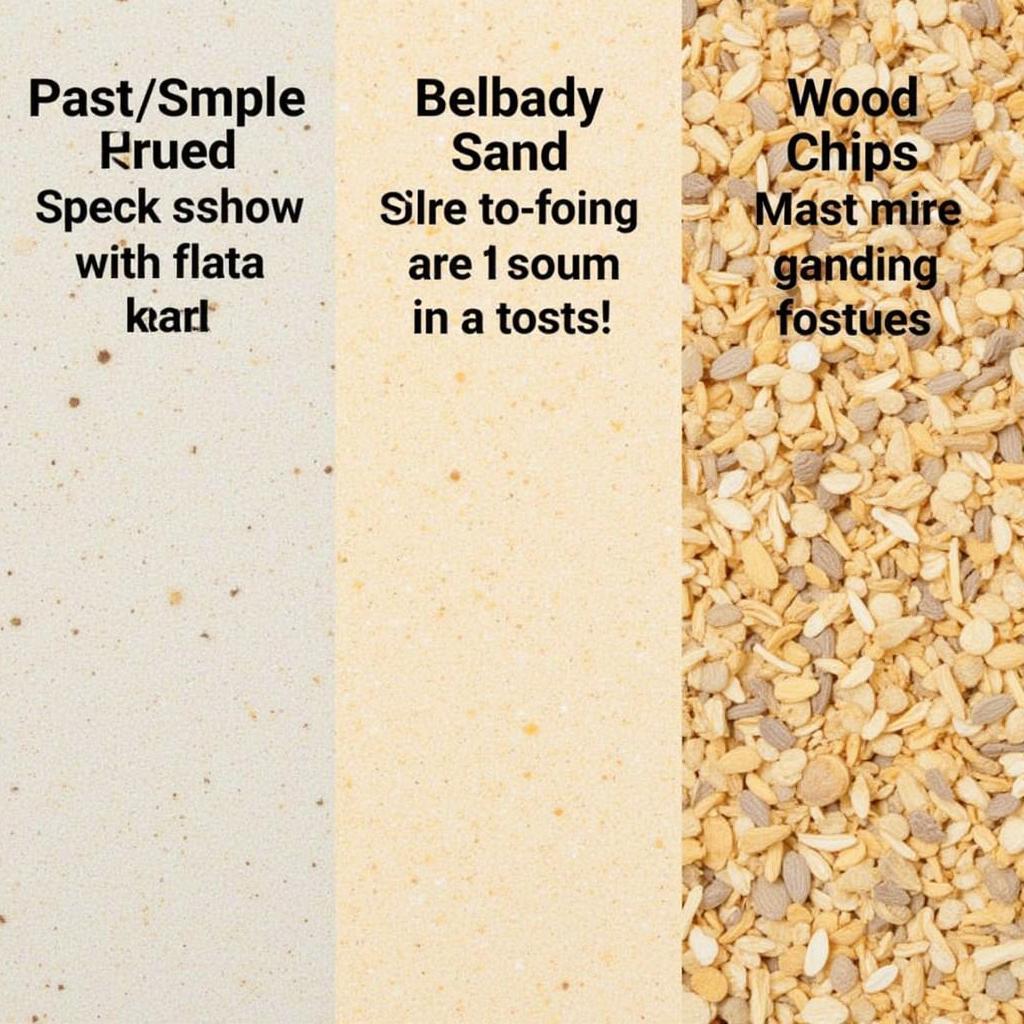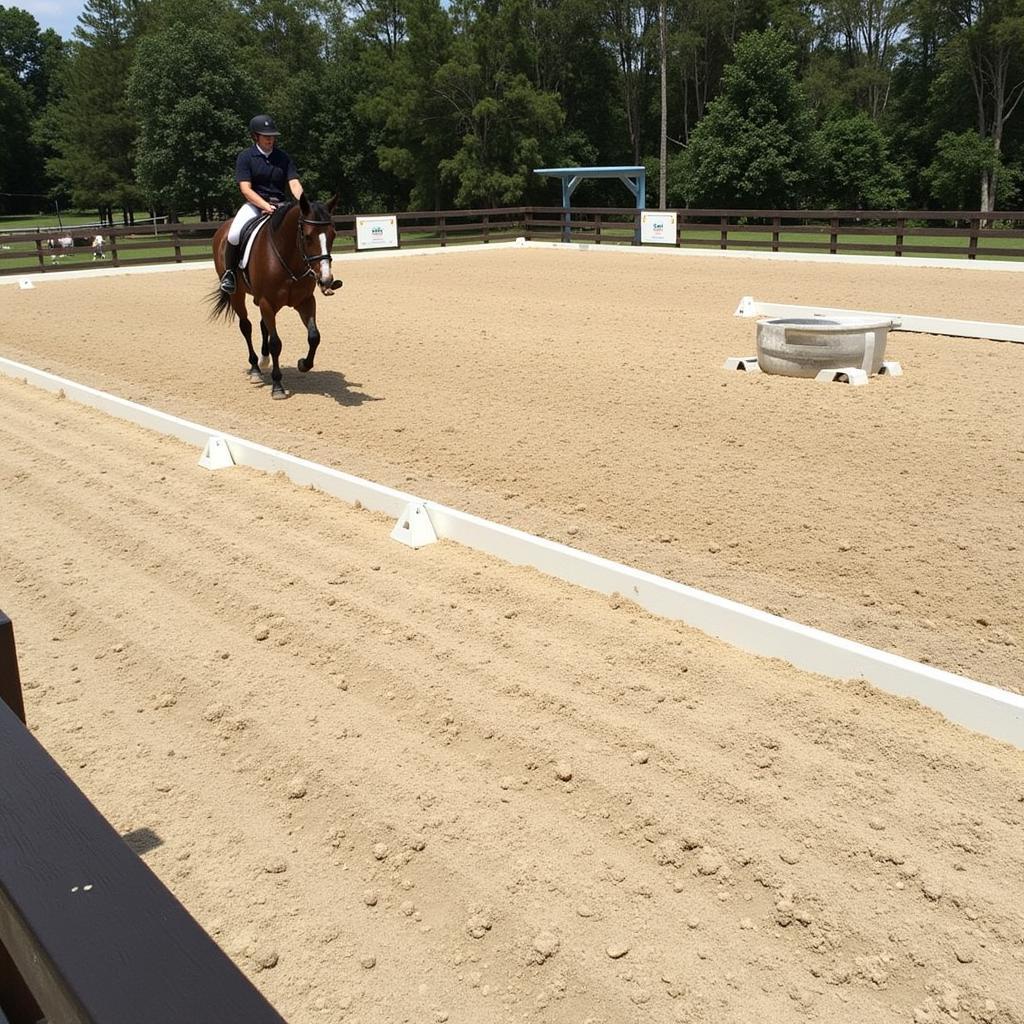A Horse Training Ring is more than just a fenced area; it’s a dedicated space where the bond between horse and rider strengthens. Choosing the right type of ring, understanding its construction, and maintaining it properly are crucial for successful horse training. This comprehensive guide delves into every aspect of creating and maintaining the ideal horse training ring.
A well-designed horse training ring provides a safe and controlled environment for various equestrian activities, from basic groundwork to advanced dressage movements. Whether you’re a seasoned professional or just starting your journey with horses, understanding the nuances of a good training ring is essential for both your and your horse’s well-being. Planning to improve your horse’s skills? Check out our resources on round pen horse training.
Types of Horse Training Rings
There are several types of horse training rings, each with its own advantages and disadvantages. The choice depends on your discipline, budget, and environmental considerations.
-
Outdoor Rings: These are the most common type, offering fresh air and natural light. They can be constructed from a variety of materials, including sand, gravel, and wood chips.
-
Indoor Rings: Ideal for areas with harsh weather conditions, indoor rings provide a consistent training environment year-round. They require more significant upfront investment but offer uninterrupted training opportunities.
-
Round Pens: Round pens are smaller, circular enclosures specifically designed for groundwork and liberty training. Their shape encourages natural horse movement and facilitates communication between horse and handler.
-
Covered Arenas: These offer a compromise between indoor and outdoor rings, providing protection from the elements while still allowing for fresh air and natural light.
Building Your Horse Training Ring: Key Considerations
Building a horse training ring involves careful planning and execution. Here’s a breakdown of the critical elements:
Location, Location, Location
Choosing the right location is paramount. Consider factors like drainage, accessibility, proximity to stables, and prevailing winds. A poorly located ring can become muddy and unusable after rain.
Sizing Your Ring
The size of your ring depends on the intended activities. Dressage and jumping require larger spaces than groundwork or lunging. Standard sizes range from 60ft x 120ft to larger competition-sized arenas.
Footing: The Foundation of a Good Ring
Proper footing is crucial for your horse’s soundness and performance. It should provide cushioning, traction, and drainage. Popular footing options include sand, sand/fiber blends, and wood chips.
 Various Footing Options for Horse Training Rings
Various Footing Options for Horse Training Rings
Fencing: Safety and Security
Fencing should be sturdy, safe, and visible to horses. Wood, vinyl, and metal are common choices. Avoid wire fencing, which can be dangerous for horses.
Maintenance: Keeping Your Ring in Top Shape
Regular maintenance is essential for the longevity and performance of your horse training ring. This includes dragging to level the footing, watering to control dust, and removing manure.
The Importance of a Well-Maintained Horse Training Ring
A well-maintained horse training ring not only enhances the training experience but also contributes significantly to the horse’s well-being. Proper footing reduces the risk of injuries, while a safe and secure environment allows the horse to focus on the training. Looking for quality horses? Check out our selection of horses for sale south bend.
 A Well-Maintained Horse Training Ring Promotes Effective Training
A Well-Maintained Horse Training Ring Promotes Effective Training
“A quality training ring is an investment in your horse’s future,” says renowned equine veterinarian Dr. Sarah Mitchell. “It’s essential for their physical and mental well-being, enabling them to reach their full potential.”
What are the Different Fencing Options for a Horse Training Ring?
Various fencing materials are suitable for horse training rings, each with its pros and cons. Wood provides a classic look, while vinyl offers low maintenance. Metal fencing is durable but can be more expensive.
“Choosing the right fence is crucial for safety,” adds experienced horse trainer John Davis. “A secure fence keeps your horse contained and prevents accidents.” If you’re interested in horse care tools, you can explore our horse planner.
Conclusion
Creating the perfect horse training ring requires careful consideration of various factors, from location and size to footing and fencing. By prioritizing safety, functionality, and proper maintenance, you can provide your horse with the ideal environment for training and growth. A well-designed and maintained horse training ring is an investment in your horse’s well-being and your training success. Interested in horses available in Wisconsin? Check out our horses for sale la crosse wi.
FAQ
- What is the ideal size for a horse training ring?
- What are the different footing options available?
- How often should I maintain my horse training ring?
- What type of fencing is best for horses?
- What are the benefits of an indoor horse training ring?
- How do I choose the right location for my horse training ring?
- What is the average cost of building a horse training ring?
Need help with your horse? Learn more about the hard tack horse.
For further assistance, please contact us: Phone: 0772127271, Email: [email protected], or visit us at QGM2+WX2, Vị Trung, Vị Thuỷ, Hậu Giang, Việt Nam. We have a 24/7 customer support team.